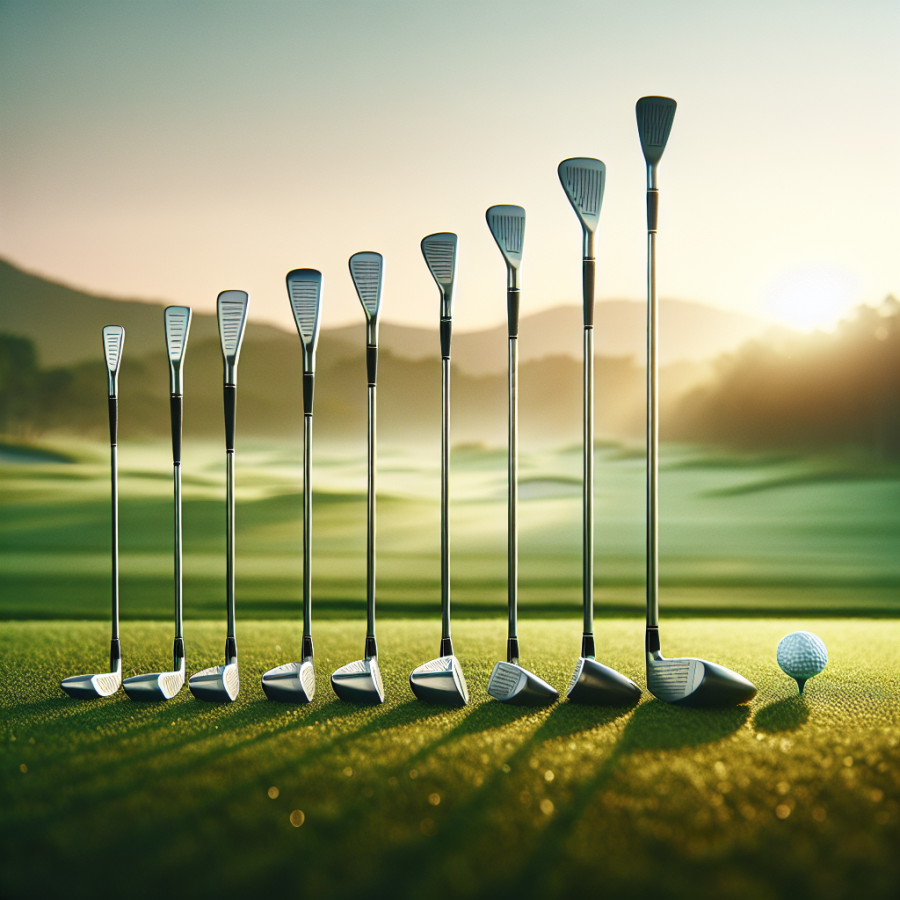Understanding the Science Behind Golf Club Distances
Understanding the science behind golf club distances starts with an acknowledgment of a few fundamental laws of physics. The distance you'll get from your golf clubs is dependent on the following main factors: loft, club length, center of gravity, and swing speed.
The first, and perhaps the simplest factor to understand, is loft. This is the angle at which the clubface leans back. A higher loft means a higher trajectory and less distance traveled, while a lower loft translates to a lower trajectory and a further distance reached. That's why drivers often have the lowest loft (around 9-13 degrees) and wedges have the highest (around 45-60 degrees).
Club length also matters. A longer club should theoretically hit the ball further because it allows you to generate a higher clubhead speed. This is due to the fundamental physics principle of the lever – the further away the force is from the rotation point (your body in this case), the higher the speed of the moving object (the clubhead). That's why your driver (typically the longest club) will reach a higher speed than your wedge.
Another factor that plays a significant role is the center of gravity of the golf club. When the center of gravity is lower and further back in the club, it makes it easier for the player to get the ball in the air and generate a higher trajectory. A higher trajectory means more hang time and therefore a longer carry distance. Hence, most modern drivers have a low and deep center of gravity to encourage a higher trajectory and a longer carry.
Finally, and most importantly, is swing speed. Swing speed is the velocity at which the clubhead is traveling at impact. The faster the swing speed, the further the golf ball can potentially travel. Small differences in swing speed can have a significant impact on the distance the golf ball travels. That's why professional golfers often work relentlessly on increasing their swing speeds.
Picking the right golf club for each shot is an art in itself and requires practice and good judgment. However, to truly master this art, one must also understand the science that influences golf club distances. Deciding between a 7-iron or an 8-iron can be the difference between reaching the green or falling short, and it all comes down to the loft, club size, center of gravity, and swing speed.
Comparing Different Types of Golf Clubs: Whose Hits are Farthest?
Understanding golf clubs is essential for any golfer hoping to improve their performance. This blog post aims to provide a detailed comparison of various golf club types, focusing on which one's shots can cover the greatest distance. We'll delve into the specifics of drivers, woods, irons, and putters – some of the key clubs every golfer must master.
Firstly, beginning with drivers, these are usually the longest clubs in a player's bag, specifically designed to hit the ball off the tee in the longest drive holes. The driver, or 1-wood, has the lowest loft (between 7-12 degrees), which enables the ball to travel a greater distance. The large clubhead and long shaft lead to a faster swing speed and, therefore, more distance.
Next are the woods, which include fairway woods and hybrids. Fairway woods, which range from 3-woods to 11-woods, feature larger heads than irons but smaller than drivers. Woods are designed for long shots from the fairway, and like the driver, the low loft and long shaft allow the ball to travel further. A 3-wood has a loft between 15-18 degrees. Hybrid clubs are a combination of woods and irons, offering characteristics of both. Hybrids are designed for versatility and they often replace long irons and fairway woods in many golfers' bags.
Iron clubs, ranging from 1-iron to 9-iron, often feature a solid metal head, shorter shafts, and more loft than woods. Irons are used for a variety of shots on the fairway, from the tee on short holes, or from difficult lies such as bunkers or rough. Long irons (1-4) are often harder to hit accurately and are generally used for long-distance shots, whereas shorter irons are suited for precise approach shots onto the green.
Lastly, putters are used for short, precise shots from the green to the hole. While putters do not cover great distances, their accuracy is vital for completing a hole with the least number of total strokes. Putters have a small, flat clubhead and a short shaft, which allows for precision but does not provide much distance.
So, which club hits the farthest? Generally, it is the driver due to the length of the shaft and the low loft, permitting a longer distance with maximum speed.




